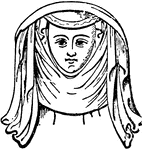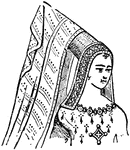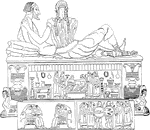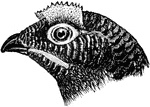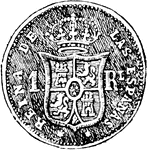
Miletus Coin
"A representation of a very early double stater of Miletus, in Ionia, of which the type is the lion's…
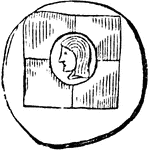
Encased Coin
"The surrounding of the punchmark with a band bearing a name, and the introduction of a head in its…

Greek Coin
"In the reign of Philip of Macedon, the coinage of Greece had attained its full development, having…

English Coin
"The pennies of the Saxon and Danish sole monarches of England had a portrait on them. Alfred's earlier…

Oannes
"The name of a Babylonian god, who, in the first year of the foundation of Babylon, is said to have…

Fowler's Plough
"A framework of iron, balanced upon two large wheels. To each side of this framework there are attached…
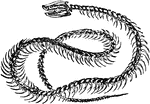
Rattlesnake Skeleton
"The vertebre of serpents are so formed as to admit a great pliancy of the body, which is capable of…
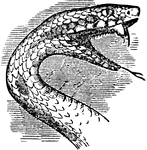
Serpent Head
"The prey of a serpent is oven thicker than the serpent itself, and to admit of its being swallowed,…
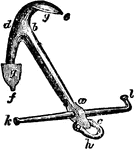
Common Anchor
"The shank is the straight part, ab; the square, ac, is that part of the shank to which the stock and…

Rodger's Anchor
"The stock is of iron in large as well as small anchors, and is made with a mortice, to fit over the…

Martin's Anchor
"The anchor is represented in the position in which it lies on the ground just before taking hold. The…

Stewarton Hive
"A hive largely and successfully used in Scotland, it is octagonal, and the "Quinby hive" of America…
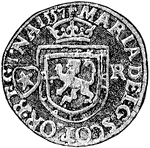
Plack
The back of a Scotch billon coin worth about two thirds of the United States cent in the fifteenth century.

Indian Pompano
A pompano with a high rounded back, rather large and smooth scales, and a nearly double dorsal, the…

Porgy
A fish native to the Mediterranean and Alantic waters. Usually silver in color and rosy on its back.

Porpoise
A small toothed ocean fish. About 6 feet in length and has a blunt head not produced into a long beak,…

Harrison's Going-Ratchet
"The click barrel-ratchet R is set upon another larger ratchet-wheel, with its teeth pointing the opposite…
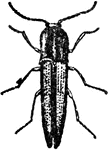
Click Beetle
"Springing Beetles, Elateridae, are narrower and more elongate than the former, and their legs are so…
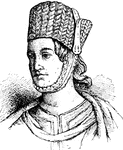
Pshem
A head dress for women, derived from the East, and adopted in Spain in the thirteenth century.

Elizabeth of York's Mitre Head-Dress
"Drawn from a portrait of Elizabeth of York when young, in stained glass at Little Malvern." — Encyclopedia…
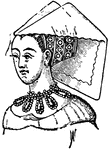
Butterfly Head-dress
"An example in which the type of a particular head-gear is exhibited with no less of moderation than…
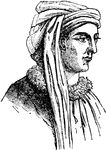
Head-Dress
"The strange male head-gear of the French. It shows the upper part of the scarf when hanging down, and…

Elizabeth, Queen of Henry VII
"The angular head-dress of Elizabeth, Queen of Henry VII." — Encyclopedia Britannica, 1893

Head-dress
"One of the least extravagant and tasteless forms of fashionable head-dress of the 18th century." —…

Slubbing Frame
"The operation which succeeds that of the drawing frame is slubbing, where the sliver has a certain…
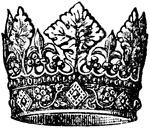
Crown
"It would seem from the crown, sculptured with elaborate care upon the head of his effigy at Canterbury,…

Torsion Balance
"ABCD is a cylinder of glass 1 foot in diameter and 1 foot high. This cylinder is closed by a glass…
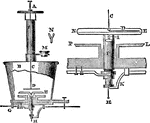
Dellman's Electrometer
"D is a needle, formed of light silver wire, suspended by a fine glass fiber, from a torsion head A.…

Siemens Electrodynamometer
F, fixed coil; D, movable coil; S, spiral spring; T, Torsion head; MM, Mercury cups; I, Index needle.

Genet
"A genus of carnivorous mammals belonging to the Viverridae or family of civets. It contains six species,…

Contorted Rocks
"Curved and contorted rocks, near Old Head of Kinsale." — Encyclopedia Britannica, 1893
Sluice
"One of the simplest forms of sluice as used in river diggings in the north-west of America. A rectangular…
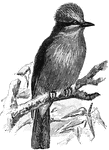
Vermilion Flycatcher
In the males, they have a full globular crest, and the hole under parts flaming red, the back, wings,…

Helix Descrtorun
"Many species hibernate. The land-snails bury themselves in the ground, or conceal themselves under…
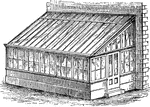
Plant House
"The glass roof is commonly designed so as to form a uniform plane or slope from back to front in lean-to…
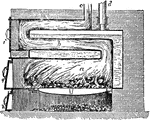
Saddle Boiler
"The fire is made under the principal arch a; the flame and smoke return through the flue b, and then…
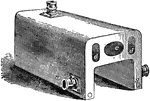
Gold Medal Boiler
"The Gold Medal Boiler is perhaps one of the best of these modified saddles, and like the others has…

Gold Medal Boiler
"The Gold Medal Boiler is perhaps one of the best of these modified saddles, and like the others has…
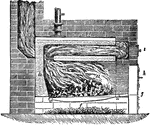
Gold Medal Boiler
"The Gold Medal Boiler is perhaps one of the best of these modified saddles, and like the others has…
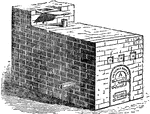
Gold Medal Boiler
"The Gold Medal Boiler is perhaps one of the best of these modified saddles, and like the others has…
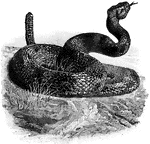
Rattlesnake
A venomous serpent whose tail ends in a rattle. It rattles its tail to warn potential predators to back…

Rebozo
A shawl or long scarf worn by Mexican and other Spanish American Women, covering the head and shoulders,…




